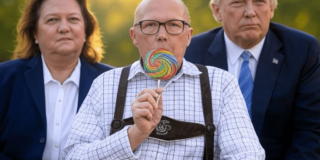
Abstract
Trust in established institutions, political leaders, and expert voices has eroded to alarming extremes in modern society. This paper explores the key drivers behind the waning belief in shared truths and the growing acceptance of alternative facts and conspiracy theories. It delves into the historical roots of misinformation, examines how technology and social media fuel widespread distrust, and considers the resulting impact on civil society. In conclusion, the paper outlines actionable strategies to rebuild trust and emphasize the importance of objective truth in public discourse.
Introduction
The belief in a shared, objective reality is a cornerstone of democracy and community cohesion. Yet, recent societal shifts reveal an unsettling embrace of alternative facts and conspiracy theories, creating a severe crisis of trust. This trend has fractured collective understanding and undermined civil discourse, jeopardising the social fabric that holds democratic communities together. If left unchecked, this crisis has profound implications, as it compromises our ability to tackle shared challenges and fosters discord and fragmentation.
The Historical Roots of Misinformation
Misinformation is hardly a modern phenomenon. History is rife with examples of truth being manipulated to achieve political and social ends. From Cleopatra’s defamation to the propaganda techniques of totalitarian regimes, misinformation has long been wielded as a tool of control. Episodes such as the Salem witch trials or the religious wars during the Crusades reveal how fear and paranoia could be weaponised to divide societies.
In the 20th century, mass media became a potent vehicle for propaganda, exemplified by the use of misinformation by figures like Hitler and Stalin to consolidate power and suppress dissent. The rise of radio and television allowed for the rapid dissemination of curated narratives that often distorted the truth. The Vietnam War, for example, showcased how media could be manipulated to frame public perception, leading to widespread mistrust in governmental institutions when the realities of the conflict became apparent (Gitlin, 1980).
The Role of Technology and Social Media
The rise of the internet and social media has revolutionised communication but also intensified the spread of misinformation. Once celebrated as catalysts for democratising knowledge and fostering global connectivity, these platforms have instead become vehicles for the rapid propagation of falsehoods. Algorithms designed to maximise engagement often prioritise sensational over factual content, boosting the reach of alternative facts and conspiracy theories.
Studies have shown that misinformation travels faster and reaches more people online compared to verified information (Vosoughi, Roy, & Aral, 2018). This shift has fragmented public discourse, forcing individuals to inhabit isolated realities shaped by their chosen information ecosystems. The phenomenon of “fake news” has become pervasive, with social media platforms struggling to contain its spread. The Cambridge Analytica scandal further exemplified how data analytics could be weaponised to manipulate voter behavior and public opinion (Cadwalladr & Graham-Harrison, 2018).
The Decline of Institutional Trust
This crisis of truth has coincided with a sharp decline in public trust toward institutions, experts, and democratic processes. Surveys consistently highlight shrinking confidence in government, the media, and scientific authorities (Pew Research Center, 2021). This decline is not uniform; certain demographic groups exhibit heightened skepticism, often influenced by their socio-political contexts.
Opportunistic political leaders have exploited this distrust, amplifying false narratives to strengthen alliances and power bases. This creates a vicious cycle: public skepticism grows stronger as institutional credibility erodes, leading people to disregard expert advice and turn to unreliable alternative sources. The erosion of trust in institutions has led to increased polarisation, where opposing groups not only disagree on issues but also on the very facts that underpin those issues (McCoy, Rahman, & Somer, 2018).
The Psychological Drivers of Misinformation Acceptance
Understanding why misinformation resonates with individuals requires examining its psychological underpinnings. Cognitive biases play a major role, particularly confirmation bias and the Dunning-Kruger effect. Confirmation bias compels individuals to seek out information that aligns with their existing views while dismissing conflicting evidence (Nickerson, 1998). The Dunning-Kruger effect compounds the problem, as those with limited knowledge often overestimate their competence, making them more confident in their flawed beliefs (Kruger & Dunning, 1999). These biases create a fertile environment for misinformation to thrive.
Moreover, the emotional appeal of conspiracy theories cannot be understated. They often provide simple explanations for complex problems, allowing individuals to exert a sense of control in an unpredictable world (Goertzel, 1994). This psychological comfort can be particularly appealing during times of crisis, as seen during the COVID-19 pandemic when misinformation about the virus proliferated online.
The Impact on Civil Society
The breakdown of trust and the surge in alternative realities have severe consequences for societal cohesion. When people no longer agree on a common understanding of truth, collaboration becomes nearly impossible. This division fosters animosity and weakens democratic principles, shifting power away from constructive debate toward the exploitation of fear and distrust.
The result is a society fractured by hostility and increasingly resistant to unity. Civic engagement declines as individuals become disillusioned with the political process, leading to apathy and withdrawal from public life. This disengagement further exacerbates the crisis, as the lack of participation allows misinformation to flourish unchecked.
Potential Steps to Rebuild Trust
Although the crisis of truth may appear overwhelming, it is not beyond repair. Several strategies could counteract the growing tide of distrust, including:
1. Promoting Media Literacy: Equip individuals with the skills to critically evaluate information sources. Comprehensive media literacy programs should be integrated into school curricula to empower citizens to distinguish fact from falsehood.
2. Increasing Transparency: Institutions must adopt transparency as a core principle in their operations and decision-making. Open and accountable governance can rebuild credibility and foster renewed public engagement.
3. Encouraging Civil Dialogue: Initiatives designed to promote respectful, open conversations between individuals with differing perspectives are essential for bridging divides and restoring community bonds.
4. Regulating Misinformation Spread: Policymakers should consider implementing laws to control the proliferation of false information on social media while safeguarding freedom of speech. However, such regulations must be carefully crafted to avoid censorship.
5. Leveraging Technology Responsibly: Technology companies must take greater responsibility for the content they host. By prioritising the dissemination of accurate information over engagement-driven misinformation, these platforms can play a role in curbing the spread of falsehoods.
Conclusion
The rise of alternative facts and conspiracy theories represents an existential crisis for the integrity of modern society. While misinformation is not new, today’s digital landscape amplifies its scope and influence in unprecedented ways. Addressing this challenge will require recognising its urgency and implementing deliberate, practical steps to restore public trust and reaffirm the importance of objective truth. The future of civil society rests on our collective ability to rebuild the trust needed to unite and move forward as a shared community.
References
• Cadwalladr, C., & Graham-Harrison, E. (2018). The Cambridge Analytica Files. The Guardian.
• Gitlin, T. (1980). The Sixties: Years of Hope, Days of Rage. Bantam Books.
• Goertzel, T. (1994). Belief in conspiracy theories. Political Psychology, 731-742.
• Kruger, J., & Dunning, D. (1999). Unskilled and unaware of it: How difficulties in recognizing one’s own incompetence lead to inflated self-assessments. Journal of Personality and Social Psychology, 77(6), 1121-1134.
• McCoy, K., Rahman, T., & Somer, M. (2018). Polarization and the Global Crisis of Democracy: A Global Snapshot. Journal of Democracy, 29(3), 12-25.
• Nickerson, R. S. (1998). Confirmation bias: A ubiquitous phenomenon in many guises. Review of General Psychology, 2(2), 175-220.
• Pew Research Center. (2021). Trust in government: A global perspective.
• Vosoughi, S., Roy, D., & Aral, S. (2018). The spread of true and false news online. Science, 359(6380), 1146-1151.


